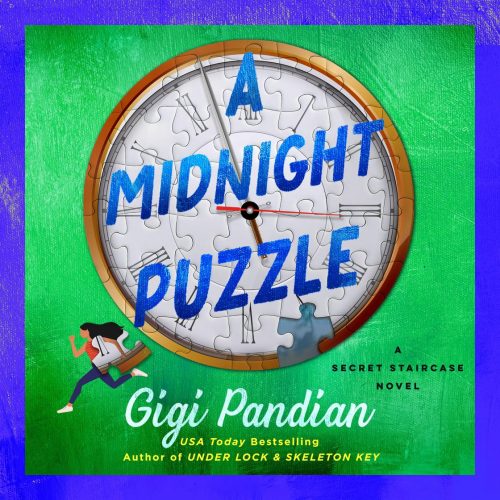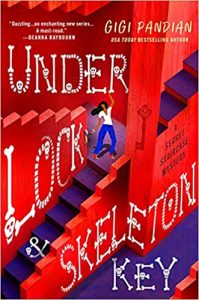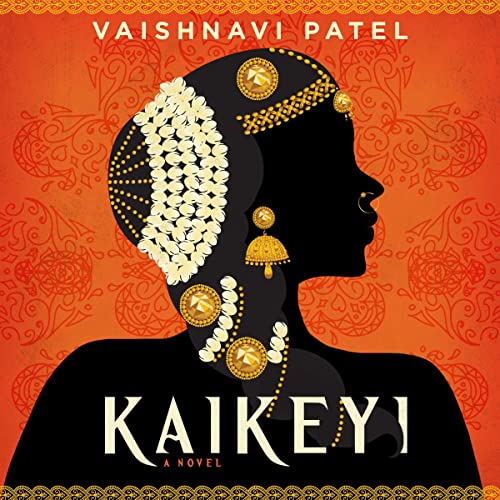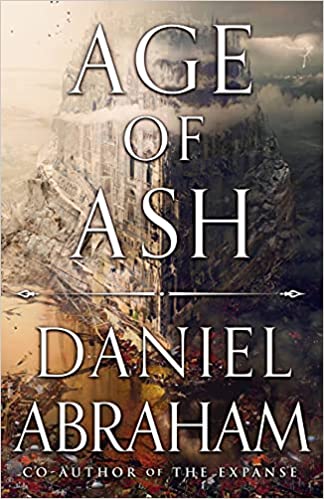 A Midnight Puzzle (Secret Staircase Mystery, #3) by Gigi Pandian
A Midnight Puzzle (Secret Staircase Mystery, #3) by Gigi Pandian Narrator: Soneela Nankani
Format: audiobook, eARC
Source: supplied by publisher via Libro.fm, supplied by publisher via NetGalley
Formats available: hardcover, ebook, audiobook
Genres: cozy mystery, mystery, thriller
Series: Secret Staircase Mystery #3
Pages: 342
Length: 10 hours and 38 minutes
Published by Macmillan Audio, Minotaur Books on March 19, 2023
Purchasing Info: Author's Website, Publisher's Website, Amazon, Barnes & Noble, Kobo, Bookshop.org, Better World Books
Goodreads
In heroine Tempest Raj, modern-day queen of the locked room mystery Gigi Pandian has created a brilliant homage to the greats of classic detective fiction. Secret Staircase Construction is under attack, and Tempest Raj feels helpless. After former client Julian Rhodes tried to kill his wife, he blamed her "accident" on the home renovation company’s craftsmanship. Now the family business—known for bringing magic into homes through hidden doors, floating staircases, and architectural puzzle walls—is at a breaking point. No amount of Scottish and Indian meals from her grandfather can distract Tempest from the truth: they’re being framed.
When Tempest receives an urgent midnight phone call from Julian, she decides to meet him at the historic Whispering Creek Theater—only to find his dead body, a sword through his chest. After a blade appears from thin air to claim another victim, Tempest is certain they’re dealing with a booby trap… something Secret Staircase Construction could easily build. Tempest refuses to wait for the investigation to turn to her or her loved ones. She knows the pieces of the puzzle are right in front of her, she just has to put them together correctly before more disaster strikes.
Multiple award-winning author Gigi Pandian and her heroine Tempest Raj return in A Midnight Puzzle, where an old theater reveals a deadly booby trap, secrets, and one puzzle of a mystery.
My Review:
A Midnight Puzzle is all about the Raj Family Curse – and the sin of hubris that allows it to last so long and makes it so damn difficult to put to rest.
 After her adventures – and misadventures – in the first two books in the Secret Staircase Mystery series, Under Lock and Skeleton Key and The Raven Thief, stage illusionist turned construction illusionist Tempest Raj believes that she is on the verge of solving the mystery that has cast a shadow over her family and her life for the past decade – if not considerably longer.
After her adventures – and misadventures – in the first two books in the Secret Staircase Mystery series, Under Lock and Skeleton Key and The Raven Thief, stage illusionist turned construction illusionist Tempest Raj believes that she is on the verge of solving the mystery that has cast a shadow over her family and her life for the past decade – if not considerably longer.
Long, long ago, the Raj family were illusionists and court magicians in their native India. Way back then, it was believed that a curse had been laid on the family – or the family business. It was said that the Raj family’s firstborn child in each generation would “die by magic”. Of course, over the centuries, it did happen sometimes. Just enough to keep the curse – or the belief in it – going for another century or so.
Tempest’s beloved grandfather Ash is the second child of his generation, because his older brother died “by magic”. Ash left India for Scotland and its renowned medical colleges, married a local artist and never looked back. Or at least tried very hard not to.
But the magic skipped a generation as well as a continent. Ash’s daughters, Elspeth and Emma, became stage illusionists as “The Selkie Sisters” until an accident and an argument broke their trust in each other. Working alone, Elspeth, the older of the two, did indeed “die by magic”, keeping the talk of the curse alive for another generation.
However, Emma died by magic as well – or at least disappeared in the middle of her own magic show, on the boards – or at least in the wings – of their hometown’s Whispering Creek Theater ten years ago.
Tempest has rented the haunted and haunting little theater in order to stage one final performance, a one night “Farewell” to her own ill-starred career as a stage illusionist. Of course, being in temporary possession of the place her mother vanished, Tempest is also determined to comb the theater for clues.
At least until disaster strikes – from without and from within. But in solving the current mystery, Tempest may have the opportunity she needs to lay that old mystery to rest. If her family’s construction company, Secret Staircase Construction, can survive just one more public disaster.
And if Tempest and her ‘Scooby gang’ can manage to unmask a killer before their curse sweeps Tempest AND her friends into yet another example of the Raj Family curse.
 Escape Rating B: I have to admit that I went into this third entry in the series with a bit of trepidation after the muddle of The Raven Thief. Particularly as A Midnight Puzzle opened with Tempest, her family and the construction company being in the midst of what seemed like rather pointedly aimed chaos on all fronts – only because it was.
Escape Rating B: I have to admit that I went into this third entry in the series with a bit of trepidation after the muddle of The Raven Thief. Particularly as A Midnight Puzzle opened with Tempest, her family and the construction company being in the midst of what seemed like rather pointedly aimed chaos on all fronts – only because it was.
(I started this one in audio, as I figured it would get me over the hump of those trepidations. And it did. I switched to text once it got going because there were so many potential clues and delicious red herrings that I needed to find out who actually ‘dunnit’ FASTER.)
But at the beginning I was still a bit stuck in thinking this series was inflicted with Cabot Cove Syndrome, or perhaps Midsommer-itis. By which I mean that all of the mysteries so far have been a bit too intimate and her family and their business have been much too personally involved – not as the investigators, or even as the direct victims – but as the suspects.
No one’s luck is THAT bad. Unless, of course, they really are cursed.
Which means that I was very pleased to see the mystery of the Raj Family Curse – at least in its modern iteration – laid to rest at the end of A Midnight Puzzle, along with a promise of more mysteries but somewhat less personal ones in future entries in the series.
But first, there’s the mystery in THIS outing. Or rather, the two mysteries that are both squarely aimed at the Raj Family.
What makes this story work better than The Raven Thief is that the story keeps its eyes – and Tempest’s – on the prize of solving the mystery of her mother’s disappearance – no matter how many distractions and misdirections get thrown in Tempest’s way.
And no matter how much the police seem to be bungling their investigation into the deadliest of those distractions.
As much and as often as Tempest is tempted (and so is the reader!) to hare off after the many distractions and misdirections, in the end A Midnight Puzzle is a very satisfying wrap up to what looks to be the opening setup trilogy for this series. And the way that the whole thing was strung out over three books feels like it was the right length after all, because this mystery has been decades in the making, so it’s only fitting that it take a year or more to wrap up in a way that leads back around to a beginning that Tempest barely knew about, as well as a reminder that “Pride goeth before destruction, and a haughty spirit before a fall.”
But Tempest is not the one who falls, even though the resulting thud breaks her heart, and it clears the way for new, and hopefully less personal mysteries and adventures. I’m looking forward to see what Tempest stirs up next.

 Kaikeyi by
Kaikeyi by 
 Age of Ash (Kithamar, #1) by
Age of Ash (Kithamar, #1) by  Escape Rating B: Oh do I have mixed feelings about this one, but let me get this out of the way first. I listened to the audiobook of Age of Ash, and the narrator did an excellent job with the material. But, but, but I had some serious issues with the material. This turned out to be one of those books where I was content enough to continue the audio because the reader was terrific but had absolutely ZERO compulsion to switch to the ebook because I just wasn’t compelled to finish the story any faster. The couple of times I tried to switch to the text it kind of turned me off so I went back to the audio.
Escape Rating B: Oh do I have mixed feelings about this one, but let me get this out of the way first. I listened to the audiobook of Age of Ash, and the narrator did an excellent job with the material. But, but, but I had some serious issues with the material. This turned out to be one of those books where I was content enough to continue the audio because the reader was terrific but had absolutely ZERO compulsion to switch to the ebook because I just wasn’t compelled to finish the story any faster. The couple of times I tried to switch to the text it kind of turned me off so I went back to the audio.